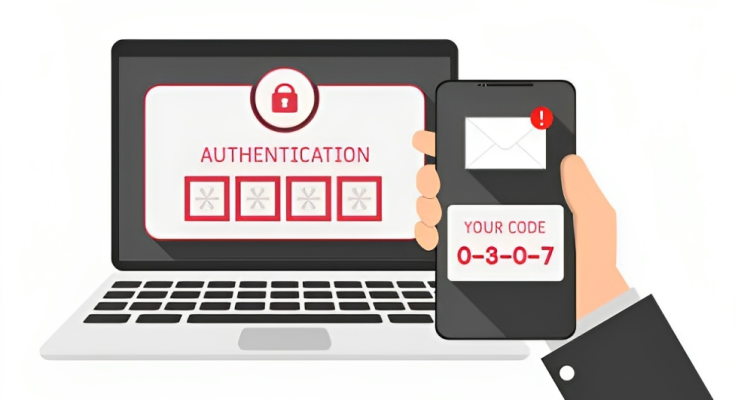In our digital world, our lives are intertwined with online accounts – from email and social media to banking and shopping. The convenience of digital access brings immense benefits but also exposes us to the ever-present risk of cyber threats. This is where Two-Factor Authentication (2FA) comes to your rescue – a simple yet powerful way to add an extra layer of protection to your online accounts.
In this article, we’ll explain Two-Factor Authentication and show you how to make it a seamless part of your online life, ensuring your accounts stay safe from unauthorized access.
Understanding Two-Factor Authentication (2FA)
What Is 2FA?
Two-Factor Authentication is a security process that requires two different forms of verification before granting access to an account. It combines something you know (like a password) with something you have (like a mobile device).
Why Is 2FA Important?
- Enhanced Security: 2FA significantly reduces the risk of unauthorized access, even if someone has your password.
- Protection from Data Breaches: In the event of a data breach, your accounts remain secure as the attacker would still need your second factor.
- Peace of Mind: Knowing your accounts are protected adds a layer of confidence to your online presence.
How Does 2FA Work?
2FA involves two steps, as the name suggests:
1. Something You Know
This is usually your password, a piece of information only you should know.
2. Something You Have
This is typically a device, like your smartphone or a hardware token. It generates a temporary code for you to enter after your password.
Types of 2FA
There are several methods to implement 2FA, each with its own advantages. Here are some common ones:
1. Text Messages (SMS)
After entering your password, you receive a one-time code via SMS. You enter this code to access your account.
2. Authentication Apps
- You install a 2FA app like Google Authenticator or Authy on your smartphone.
- The app generates a new code every 30 seconds.
- You enter this code along with your password to access your account.
3. Email Authentication
Similar to SMS, but you receive the code via email.
4. Hardware Tokens
A physical device generates the codes. You enter the code displayed on the device to access your account.
Setting Up 2FA on Your Accounts
Implementing 2FA on your accounts is simpler than you might think. Here’s a general process:
1. Go to Your Account Settings
Log in to your account and navigate to the security or account settings.
2. Enable 2FA
Look for an option to enable Two-Factor Authentication. Choose your preferred method (e.g., SMS, authentication app).
3. Follow the Setup Process
Depending on the method you choose, follow the on-screen instructions. You may need to scan a QR code (authentication app) or provide your phone number (SMS).
4. Verify Your Setup
Enter the code generated by your 2FA method to confirm it’s working correctly.
5. Save Backup Codes
Some services provide backup codes in case you lose access to your 2FA method. Store these codes in a safe place.
Tips for Using 2FA Effectively
Here are some practical tips to make the most of 2FA:
- Use an Authenticator App: Authentication apps are more secure than SMS, as they are not susceptible to SIM card swapping attacks.
- Print or Store Backup Codes: If offered, save or print backup codes and keep them in a safe place. They’re a lifesaver if you ever lose access to your 2FA device.
- Don’t Share 2FA Codes: Never share your 2FA codes with anyone, even if they claim to be from the service provider. Legitimate organizations won’t ask for this information.
- Update Your Recovery Information: Keep your recovery email and phone number up to date. This helps you regain access to your accounts if you lose your 2FA method.
Conclusion
Two-Factor Authentication is a simple yet potent tool in your arsenal to safeguard your online presence. It adds an additional layer of security that significantly reduces the risk of unauthorized access to your accounts. The best part is setting it up is often straightforward and quick, and the peace of mind it offers is immeasurable.
Don’t wait until it’s too late; enable Two-Factor Authentication on your critical accounts today. Your digital life will be better protected, and you’ll be well-prepared to face the ever-evolving landscape of cyber threats.




